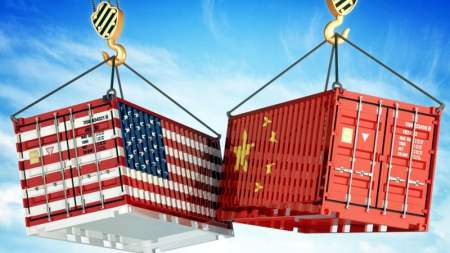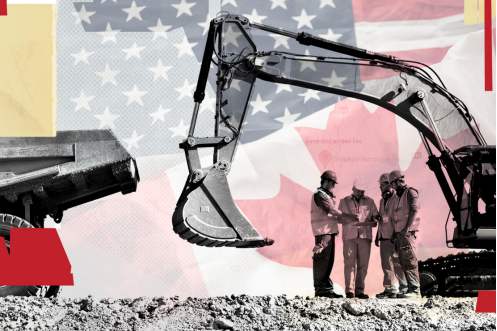【Graphite】Detailed Explanation of the Graphite War between China and the United States!

【Graphite】Detailed Explanation of the Graphite War between China and the United States!
Graphite is one of the key components in the manufacture of electric vehicle batteries and has become a new focus of the Sino-US trade war. The U.S. government is working to establish a new supply chain for graphite that is free from China.
In the long run, China will still be the dominant player in the graphite supply market. If American companies cannot complete the "de-Chinaization" of the graphite supply chain before the end of the IRA graphite exemption period at the end of 2027, the transformation of electric vehicles in the United States will face more obstacles.
For the United States, the high-end production and processing technology of natural graphite still relies on China. The short-term advantages of domestic natural graphite production technology and cost are irreplaceable. Graphitized carburants have a wide range of applications and can bring good economic benefits to the steel, metallurgy, and casting industries. Chinese natural graphite enterprises should protect their own research and development advantages to increase the international competitiveness of natural graphite.
Graphite as a key raw material for power batteries
Lithium-ion batteries powering electric vehicles consist of two electrodes – one side is the negative (cathode) electrode, and the other side is the positive (anode) electrode. At present, graphite is the main material that can be used as a negative electrode, and there is no alternative. Graphite has high natural strength and hardness, and is an excellent thermal and electrical conductor. The positive electrode uses lithium, nickel, manganese, cobalt and other metals. Depending on the battery chemistry, battery manufacturers have different options.
Elon Musk once said, "Our battery should be called nickel-graphite battery, because the positive electrode is nickel, while the negative electrode is composed of graphite and silicon oxide.".
According to the World Bank, graphite accounts for 53.8% of battery minerals and is the most used. Although lithium is the main component of all batteries, its usage only accounts for 4% of the demand.
The anode material known as spherical graphite either comes from graphite concentrate produced by graphite mines or from synthetic (artificial) graphite. Only flake graphite with a purity of 99.95% meets the requirements. Plug-in electric vehicles contain an average of 70 kilograms of graphite, while hybrid vehicles contain 10 kilograms of graphite. For every 1 million electric vehicles, about 75,000 tons of graphite are needed, which is equivalent to a 10% increase in the demand for flake graphite.
According to Benchmark Mineral Intelligence (BMI), the demand for flake graphite raw materials in the world lithium-ion anode market is expected to reach 1.25 million tons per year by 2025.

China's dominance in graphite supply
China is the world's largest producer of graphite, providing 67% of the global supply of natural graphite. China also refines more than 90% of the world's graphite into materials used in almost all electric vehicle battery cathodes.
China's natural graphite resources are characterized by wide distribution, large reserves, good quality, and easy mining. They are distributed in 20 provinces (autonomous regions and municipalities), with a total of 195 mining areas and the world's largest total reserves. It is one of China's advantageous minerals. At present, China has formed six major graphite production bases in five provinces (autonomous regions) including Heilongjiang, Inner Mongolia, Shandong, Hunan and Jilin, with Heilongjiang and Inner Mongolia as the main production areas. According to the mineralization conditions and laws of graphite, 15 key mineralization zones have been divided across the country. China has the largest reserves of natural flake graphite in the world, and the quality is also the best. At present, almost all graphite processing is in China.
Graphite is a key resource, and China cannot develop it without restraint or export it at low prices without processing or rough processing. Developed countries in Europe and America seldom develop their own graphite minerals for the purpose of protecting resources. China's natural flake graphite is formed under special geological conditions and takes a long time to form. It is precious and non-renewable, so it is necessary for China to implement export control and protect resources.
In addition, the EU will launch an anti-subsidy investigation on China's new energy vehicles, and the United States will further tighten restrictions on China's chip industry. China, which plays an important role in the global graphite industry, has responded by imposing export controls on graphite, which is used as a raw material in many strategic emerging industries and an important component of new energy batteries.
On October 20, 2023, the Ministry of Commerce of China announced the export control of graphite-related items. The high-purity (purity>99.9%), high-strength (flexural strength>30Mpa), high-density (density>1.73g/cm3) artificial graphite materials and their products, as well as natural flake graphite and its products (including spheroidized graphite, expanded graphite, etc.) are officially included in the export control list.
The US response to China's graphite export control
First, in 2022, President Biden signed the Inflation Reduction Act (IRA). The bill stipulates that qualified new energy vehicles can enjoy a tax credit of up to $7,500. To ensure the autonomy and security of the supply chain, the bill requires that the entire vehicle must be assembled in North America, and a certain proportion of key raw materials for battery components must be mined or processed in North America. The law also prohibits manufacturers from purchasing battery components and key minerals from foreign-related entities (FEOC) starting in 2024 and 2025, respectively. FEOC includes China, Russia, Iran and North Korea.
The U.S. government announced on May 3, 2024 that there will be a two-year grace period before the provisions of the Inflation Reduction Act on battery materials come into effect, allowing electric vehicle companies and battery manufacturers to obtain alternative supplies of key electric vehicle battery minerals such as graphite from non-Chinese companies by the end of 2026. This move, while countering China's 2023 export control policy on graphite, gives American companies more time to establish a new supply system.

On June 8, 2024,the Biden administration announced that it would increase the import tariff on natural graphite from 0% to 25% starting this year. The successive measures indicate that the United States remains highly sensitive and nervous about graphite, an area where China has an absolute advantage. In order to continue to suppress China's graphite exports and support its own new energy supply chain, the United States is working hard to develop structural procurement incentives to get rid of "dependence on China's graphite supply chain".
Secondly, the development of graphite production, processing and supply by American companies will reduce their dependence on Chinese graphite supply and try to establish new supply chains and capacity layouts. For example, NOVONIX Limite, a leading U.S. battery materials and technology company, signed a binding supply agreement with Panasonic Energy on February 9, 2024 to purchase synthetic graphite from its Tennessee plant; Syrah Resources, a natural graphite supplier in Australia, began operations at its 11.25 kiloton per year (ktpa) natural graphite production plant in Vidalia, Louisiana, USA; On February 15th, Nouveau Monde Graphite (NMG), a Canadian mining company, made two significant announcements. It signed acquisition agreements with General Motors (GM) and Panasonic Energy Corporation, providing each company with 18,000 metric tons of anode active material annually.
Third, the United States seeks to invest in graphite in Africa to reduce its dependence on China's graphite supply chain. Even if it is difficult to establish a sound local supply chain in the short term, the US government can choose to import graphite from Africa. Compared to North America, Africa is not only richer in resources, but also has stable operations for some projects.
Madagascar, Mozambique and Tanzania have many advantages as graphite suppliers. These three countries have a large amount of graphite resources, and the natural graphite reserves of the three countries (67 million tons) are almost equal to those of China (78 million tons) and Brazil (74 million tons).
The prospect of establishing a non-Chinese graphite supply chain in the United States
The U.S. government is trying to establish a non-Chinese negative supply chain to eliminate China's dominant influence on the electric vehicle supply chain. But this work will be carried out very slowly and at a huge cost.
China's dominant position in the graphite supply market remains an objective fact. It will take several years for American companies to build a complete graphite supply chain. During this period, the procurement of graphite (especially natural graphite) remains a problem.
The Financial Times pointed out that before the expiration of the US IRA graphite exemption at the end of 2027, non-Chinese companies will not be able to replicate China's graphite anode capacity, which means that either the exemption must be extended or only a very small number of vehicles will be eligible for the credit, which will further hinder the transition of electric vehicles in the United States.
Financing problems, long delivery times, the need to obtain environmental permits, energy costs, and a lack of expertise compared to Chinese competitors make the entry threshold for non-Chinese companies very high. Two years is clearly not enough for US electric vehicle manufacturers.
Bush said, "American automakers are losing money on electric vehicles, while Korean battery companies and material companies are cutting or considering cutting production capacity. He pointed out that all the processed graphite of Posco Future M, the only negative electrode producer in South Korea, comes from China.
Epilogue
Graphite is one of the key components for manufacturing electric vehicle batteries and has become a new focus of the Sino-US trade war.
The U.S. government is working to establish a new supply chain for graphite from China. In the long run, China remains the dominant player in the graphite supply market. If American companies cannot complete the "de-Chinaization" of the graphite supply chain before the end of the IRA graphite exemption period in 2027, the transformation of electric vehicles in the United States will face more obstacles.
(Source: Institute of Oceanography and Geography)
Feel free to contact us anytime for more information about the Graphite market. Our team is dedicated to providing you with in-depth insights and customized assistance based on your needs. Whether you have questions about product specifications, market trends, or pricing, we are here to help.
No related results found








0 Replies